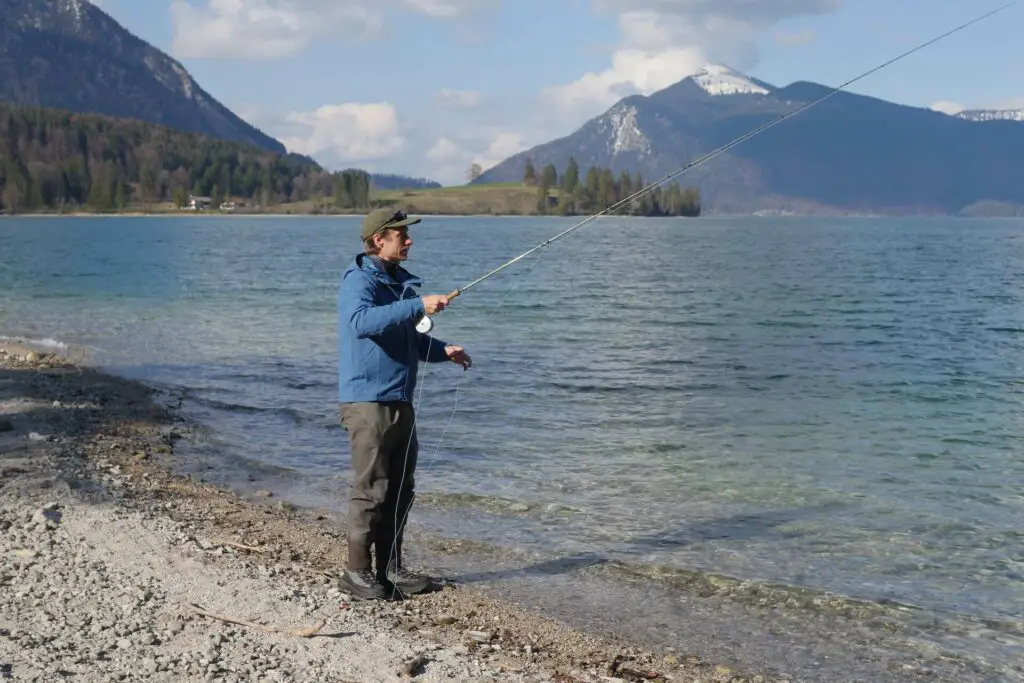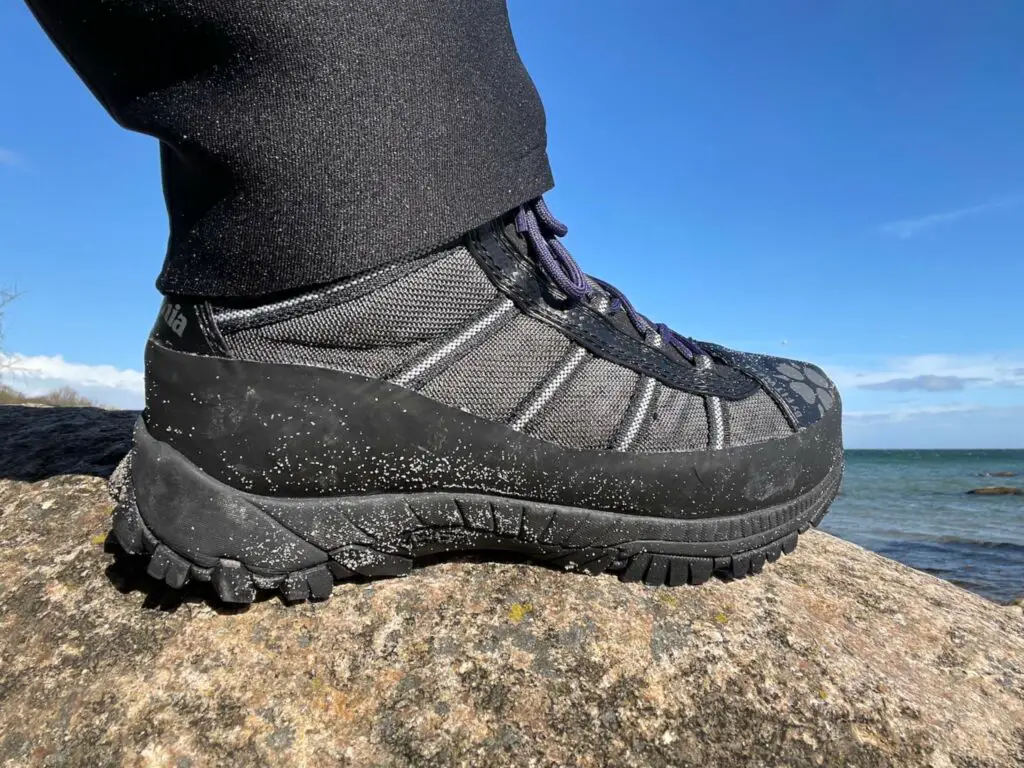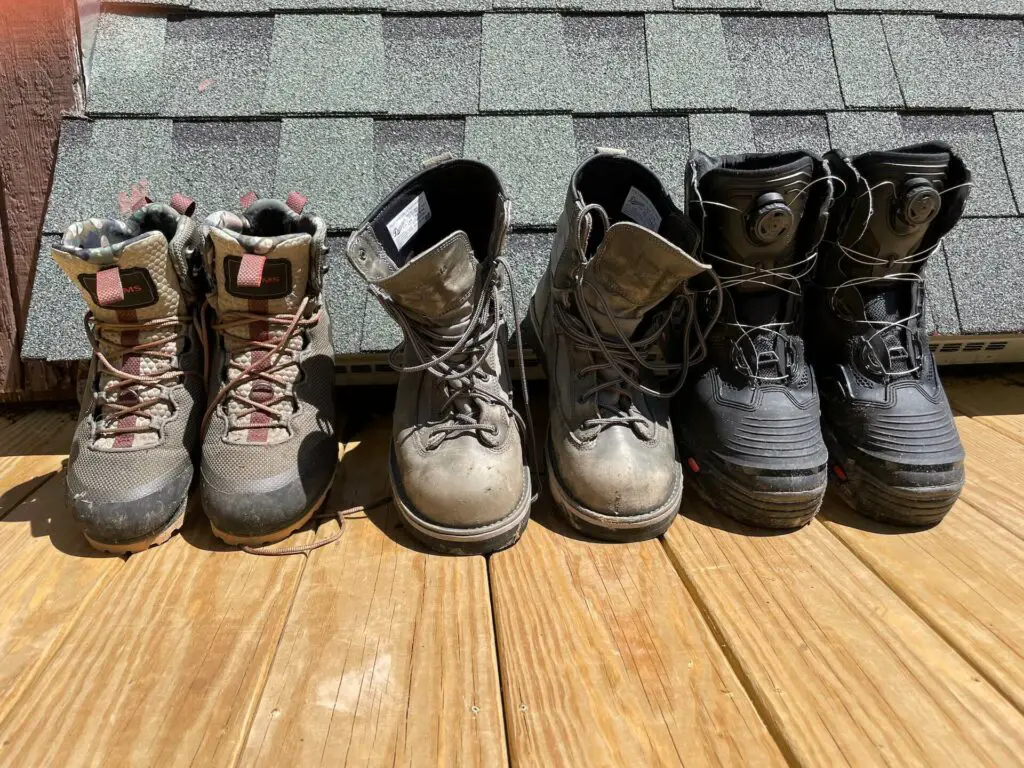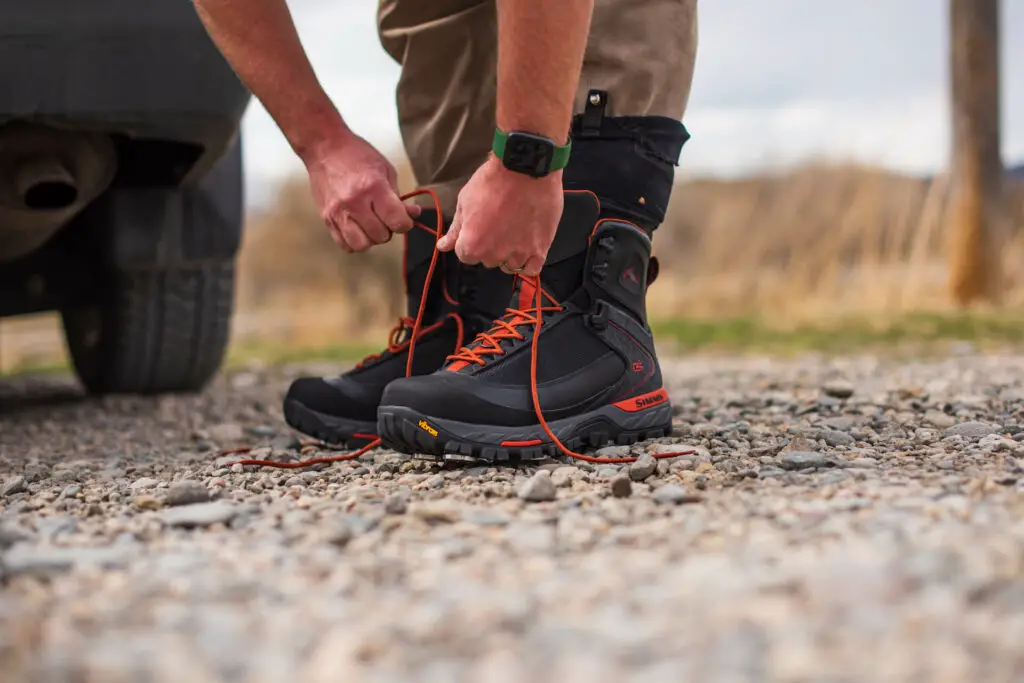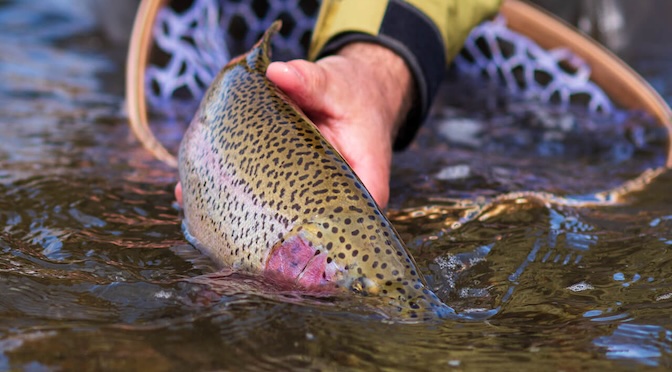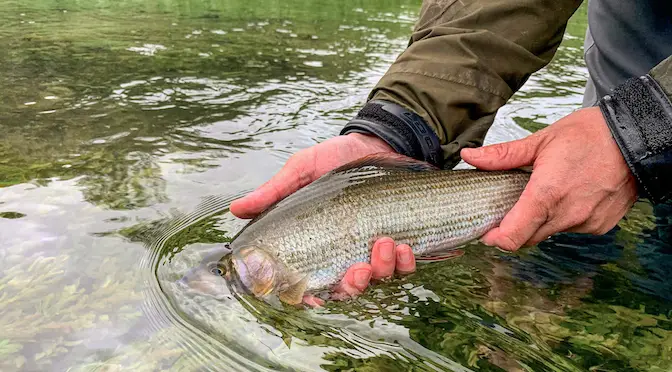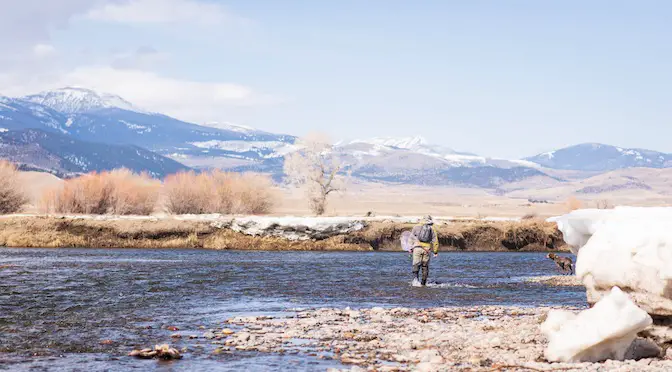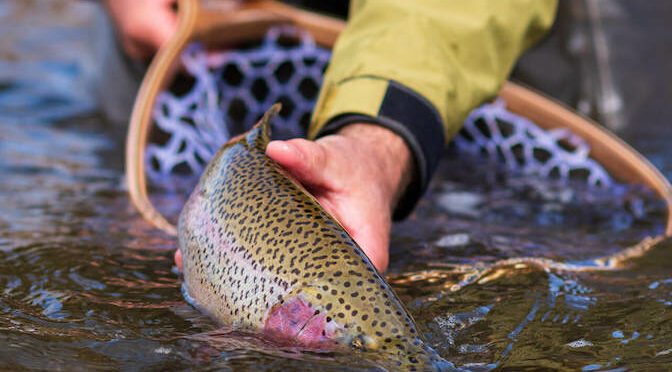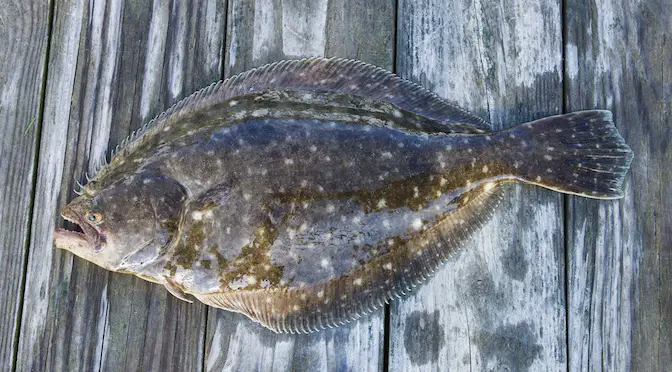Last updated on January 9th, 2024.
- Wading Wisdom #13 – Simon Gawesworth - July 7, 2025
- On the Water with the Korkers Bantam Lite - June 26, 2025
- How to Find Trout in Rivers & Streams Anywhere - June 13, 2025
For anyone who loves fishing or water adventures, having a good pair of wading boots is a must.
These boots help you move easily while also keeping you safe in the water. But here’s the question: Should your boots be light or sturdy? Let’s dive into this and help you find the right balance between light and sturdy wading boots.
How Important are Light Wading Boots?
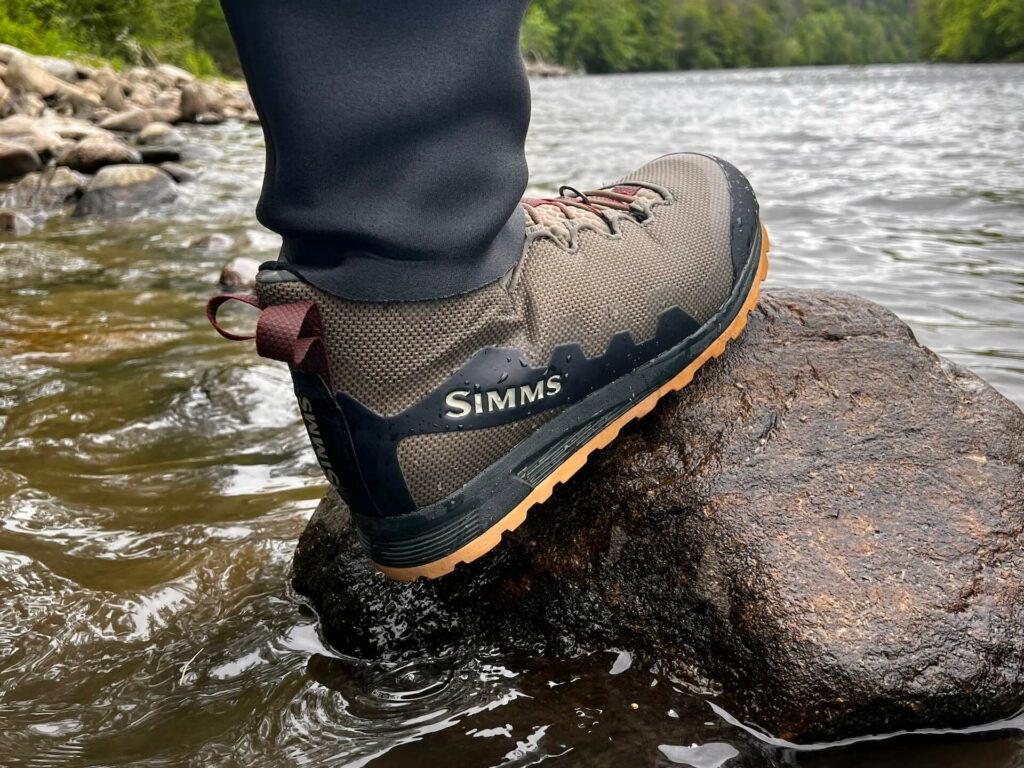
If you’re planning an all-day adventure or need to walk long distances, light wading boots can be a game-changer. These boots are kinder to your legs and feet, helping to reduce tiredness. With light boots, you can move fast and stay comfortable, which is crucial if your day involves lots of walking, hiking, or standing. Every ounce matters when it comes to footwear, influencing how tired you feel and your overall comfort.
Comfort and Ease
One of the biggest perks of light wading boots is the comfort they offer. With less weight dragging you down, you’re free to move with ease. This is especially noticeable on days when you find yourself on your feet for hours on end. The lightweight nature of these boots means less work for your legs, allowing you to enjoy your time in the water without constantly thinking about sore, tired feet.
Saving Energy
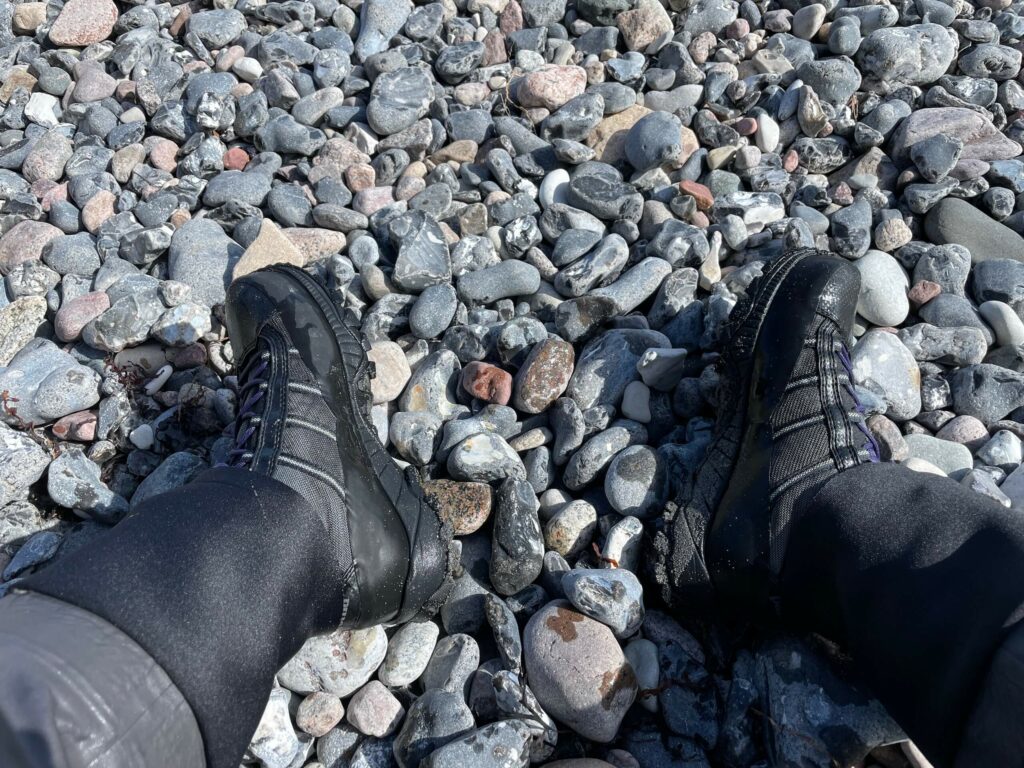
Less weight means less energy used. With lightweight boots, each step requires less effort, helping you conserve energy. This can be invaluable, letting you stay out longer and enjoy your adventure without feeling exhausted. If you’ve ever ended a day of wading feeling completely wiped out, a pair of light boots might be just what you need to keep your energy levels up.
Quick Moves
Light boots are not just comfortable; they also allow for quick, agile movements. When you’re in the water, situations can change in the blink of an eye. If you need to move fast, either to stay safe or to catch a fish, heavy boots can slow you down. But with lightweight boots, you can respond to changing conditions swiftly, improving both your safety and your success rate.
Weight and Performance Go Hand in Hand
Light boots can also help you perform better. They are designed in a way that lets you move easily and respond quickly to what’s happening around you. This is key in waters that change quickly where you need to move fast either for safety reasons or to catch fish.
With their smooth design, they make moving through the water a breeze for everyone who fishes, whether you’re just starting out or have been at it for years. When things in the water shift quickly, having gear like light boots, which allow for quick reactions without sacrificing stability, can be a real difference-maker. It’s for reasons like these that many folks prefer light wading boots. They’re all about boosting your performance and helping you have a good time while you’re out there in the water.
Finding the Compromise: Lightweight Vs Stability
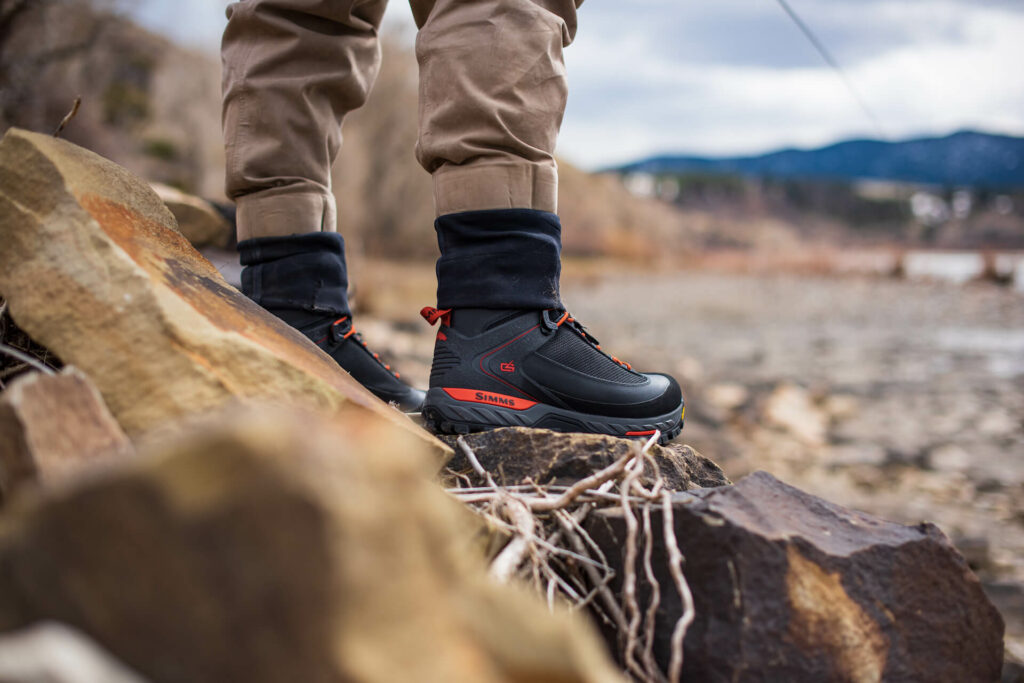
Finding a compromise between weight and stability is pivotal. Stability provides the support needed on uneven, slippery terrains, acting as a safeguard against falls and injuries. It’s imperative to select boots that offer adequate ankle support, traction, and durability without being overly hefty. The balance ensures not only safety but also comfort and functionality during use.
Materials also play a crucial role in this balancing act. For instance, EVA (ethylene-vinyl acetate) midsoles offer excellent cushioning and support while remaining relatively lightweight. The use of robust, light materials like synthetic leather or tough nylon can provide the necessary durability without adding unnecessary weight.
Mesh Fabric: Foundation of Light Wading Boots
Mesh fabric is a popular choice for light wading boots due to its inherent lightweight characteristics. It offers breathability, which is invaluable in wet environments, helping to keep feet dry and comfortable. Moreover, the mesh allows for quicker drying times, reducing the time boots remain heavy and saturated after exposure to water.
While mesh is lightweight, considerations around durability and protection are paramount. It might not offer the same level of protection as heavier materials, making it essential to consider the type of terrain and conditions one expects to encounter.
Drainage Holes: Reducing Weight and Enhancing Comfort
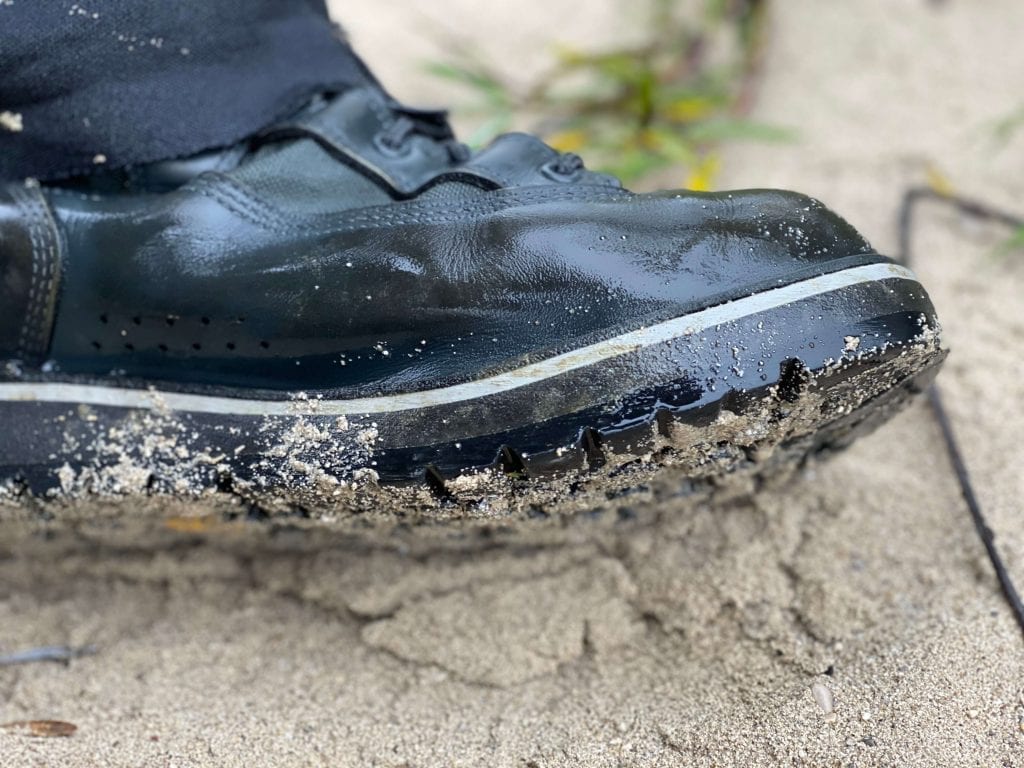
Drainage holes are crucial in wading boots as they allow water to escape, maintaining the boot’s lightness and enhancing comfort. Without effective drainage, boots can become heavy and cumbersome, impeding movement and increasing the risk of accidents and discomfort.
Effective drainage holes should be strategically positioned and adequately sized. They must be large enough to allow water to exit but small enough to prevent debris entry, which could compromise the boot’s interior comfort and functionality.
Low Ankle Boots: Lightweight but at What Cost?
Low ankle boots are enticing for those seeking the lightest option possible. They are easy to wear, allow for enhanced mobility, and are typically cooler, making them ideal for warm weather conditions. However, their low-cut design means a compromise on ankle support and stability, making them less suitable for challenging terrains where support is non-negotiable.
Understanding the specific use-case scenarios for low ankle boots is vital. They might be apt for calm, even terrains or casual water engagements but might fall short in providing the necessary support and protection needed for more strenuous or hazardous water activities.
Striking the Right Balance
Picking between light and sturdy wading boots depends on what you need, where you’ll be, and the conditions you’ll face. There isn’t a one-size-fits-all answer to this.
Lightweight boots with mesh fabric and effective drainage systems are invaluable for those prioritizing mobility and comfort over long distances. However, if your adventures lead you through challenging terrains requiring robust support and protection, a sturdier design that doesn’t compromise too much on weight might be more fitting.
With that all said, the best wading boots are those that offer a harmonious balance between lightness and stability, providing comfort without sacrificing safety, supporting your adventures through every step and splash. Always consider the type of activity, the terrain, and personal comfort and support needs when making your selection.
With careful consideration and a clear understanding of your requirements, finding the perfect pair of wading boots that marry low weight and sturdiness effectively is not only possible but also a gateway to safer, more enjoyable water adventures.
FAQs: Lightweight and Sturdy Wading Boots
What are the advantages of lightweight wading boots?
Lightweight wading boots offer increased comfort, especially during long fishing sessions or if you’re trekking to remote fishing spots. The reduced weight can reduce fatigue, allowing for prolonged activity without unnecessary strain on your feet.
In which conditions should I prioritize sturdiness over lightweight design?
If you’re fishing in areas with rocky, uneven, or challenging terrains, or places with swift currents, sturdiness should be a priority. A more robust boot can offer better protection against sharp rocks and better ankle support, reducing the risk of injuries.
Do sturdy wading boots mean they are heavy and uncomfortable?
Not necessarily. “Sturdy” typically refers to the durability and strength of the materials used, not always the weight. Many modern wading boots are constructed using materials that offer both durability and a lightweight feel, striking a balance between comfort and long-lasting performance.
Are lightweight wading boots less durable than their sturdier counterparts?
Not always. The durability of a wading boot depends on the quality of its materials and construction. There are lightweight boots made with advanced materials that can be as durable as heavier ones. Always check the build quality and reviews before making a purchase.
Can I get a wading boot that’s both lightweight and sturdy?
Absolutely! Advances in materials and design have made it possible to have boots that combine the best of both worlds. Look for boots that use modern, high-quality materials and tout both comfort and durability in their design features. It might come at a higher price point, but the combination of comfort and longevity can be worth the investment.

